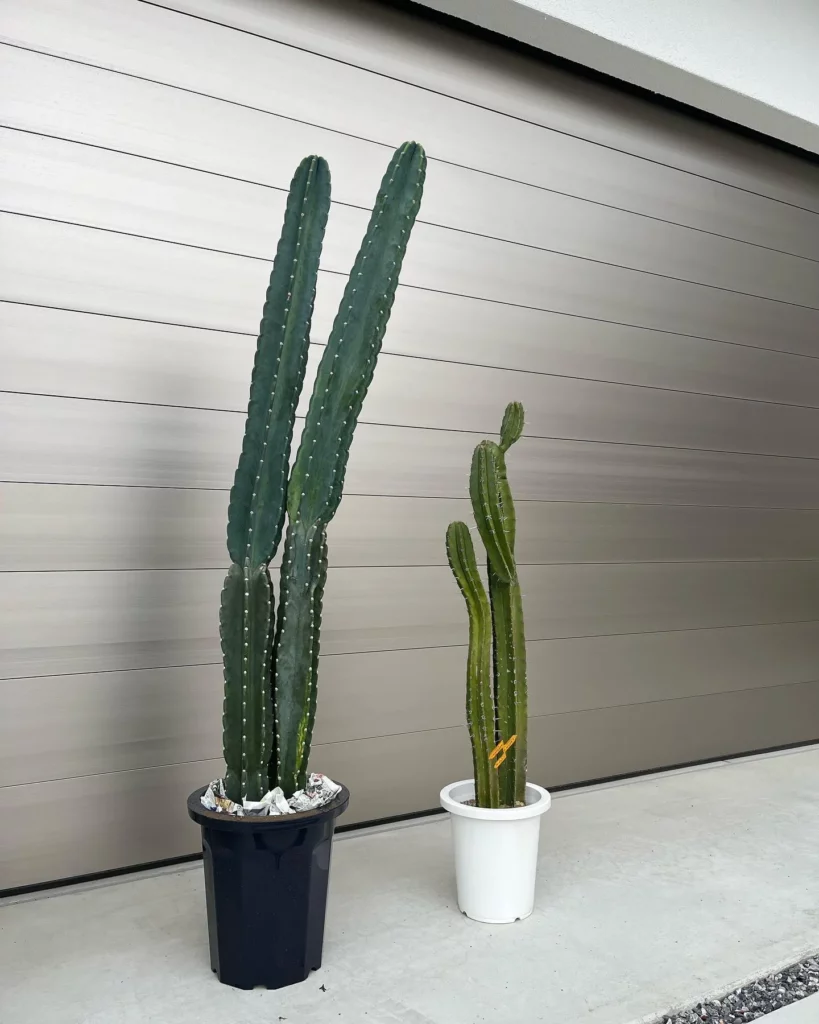South African aloe plants have a distinct and captivating appearance. Their thin and narrow gray-green leaves spread out and gracefully curve downward towards the tips. These leaves can grow up to 2 feet long and feature small, sharp reddish teeth along the margins, adding to their visual appeal. When grown outdoors, South African aloe plants adopt a tree-like habit and can reach an impressive height of 6 to 13 feet.
Key Takeaways:
- South African Aloe plants have a stunning appearance with thin and narrow gray-green leaves.
- They thrive in full sun but can tolerate partial shade.
- Watering should be done sparingly, following the soak-and-dry method.
- Fertilize with a succulent-friendly liquid houseplant fertilizer or organic compost.
- Use well-draining soil and repot only when necessary.
Appearance of South African Aloe
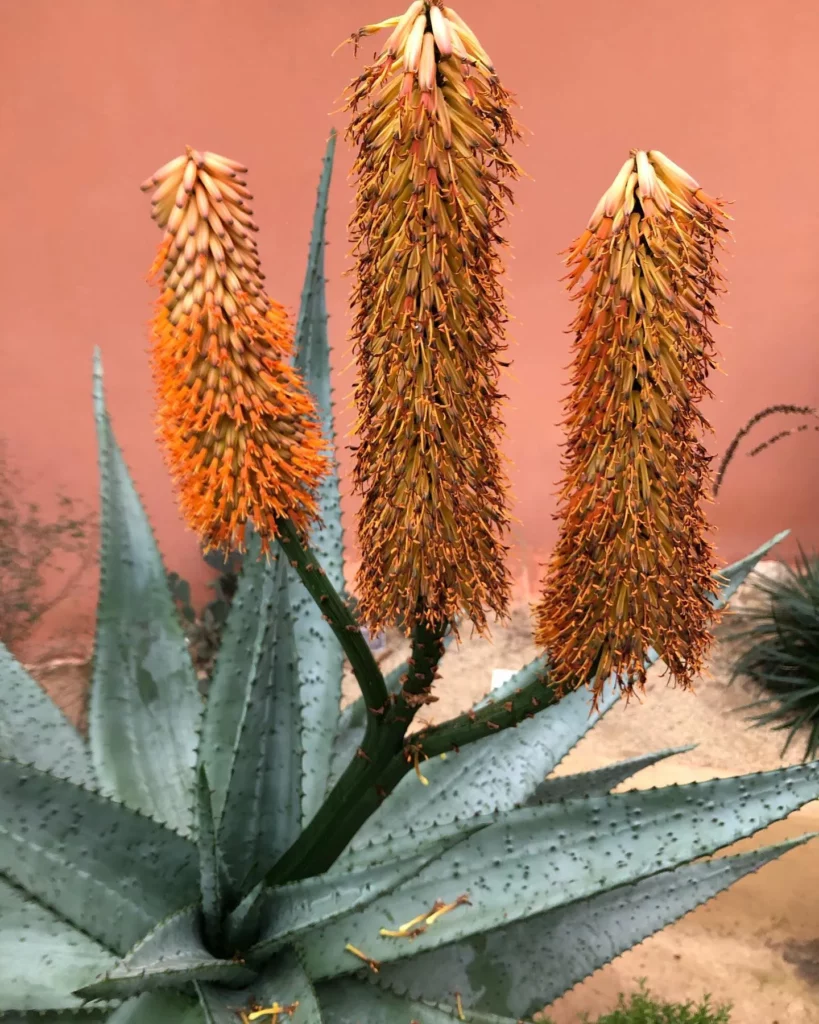
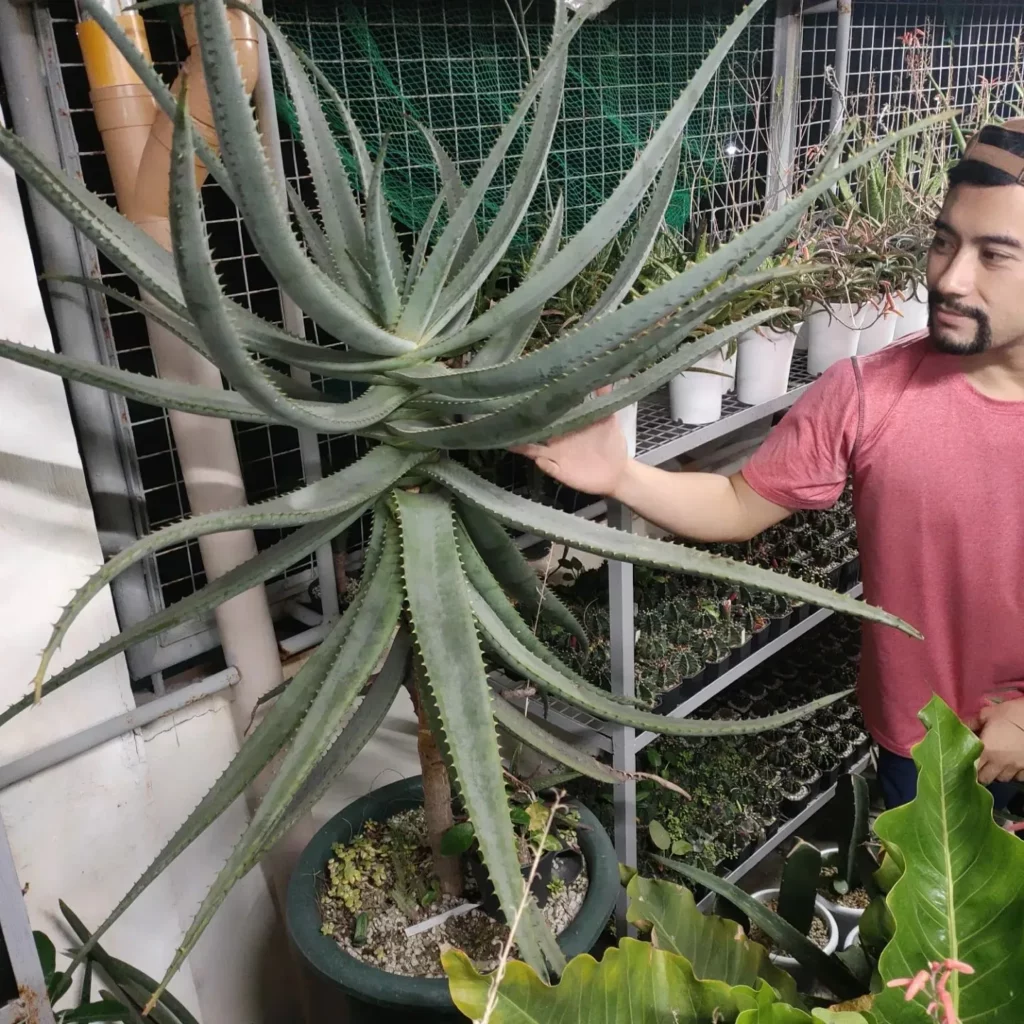
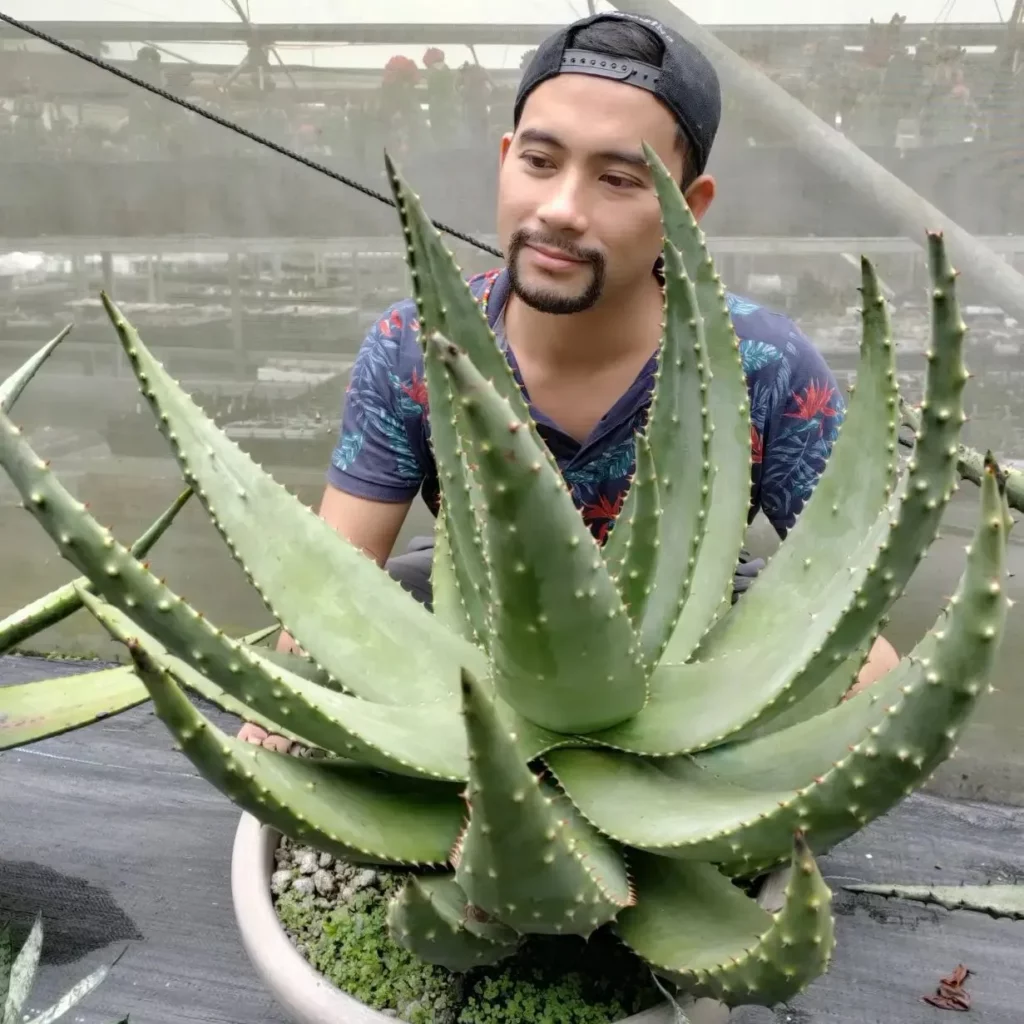
One of the most enchanting aspects of the South African aloe is its stunning flowers. The plant produces spires of tubular flowers that start as reddish-orange buds and gradually change to yellow-orange or pure yellow as they open. The vibrant colors and unique shape of the flowers make them a beautiful sight to behold.
Overall, the South African aloe boasts an elegant and striking appearance, making it a popular choice among succulent enthusiasts and gardeners looking to add a touch of beauty to their outdoor spaces.
Light Requirements for South African Aloe
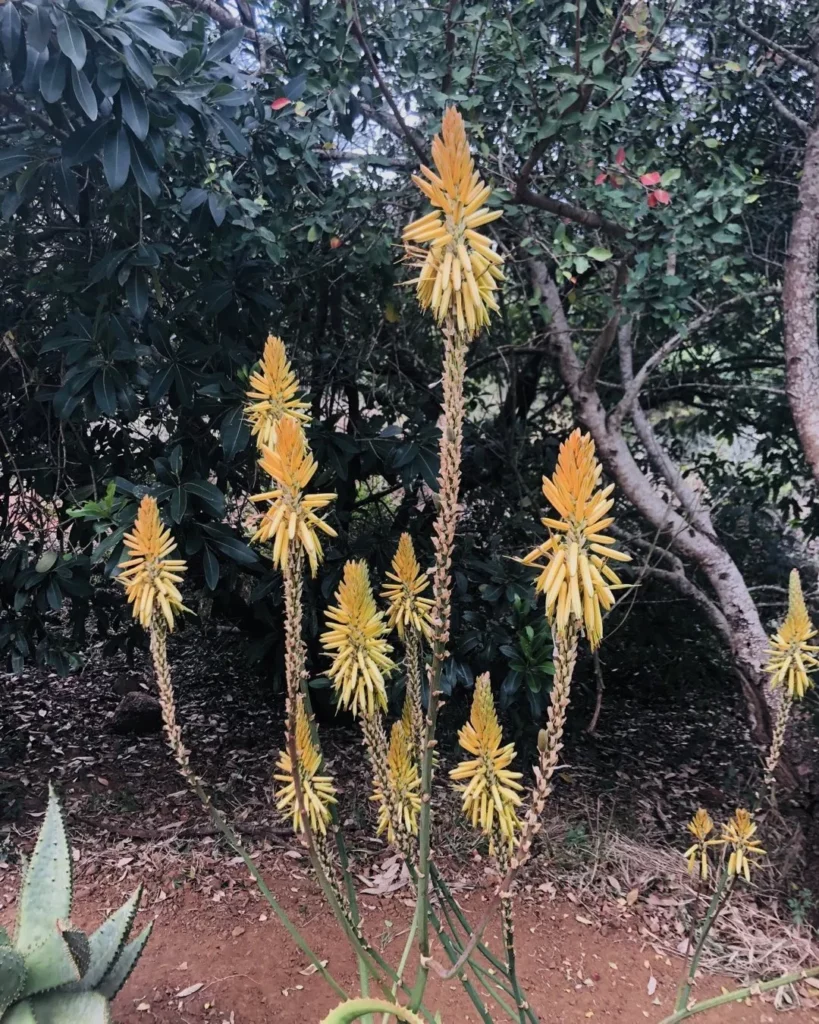
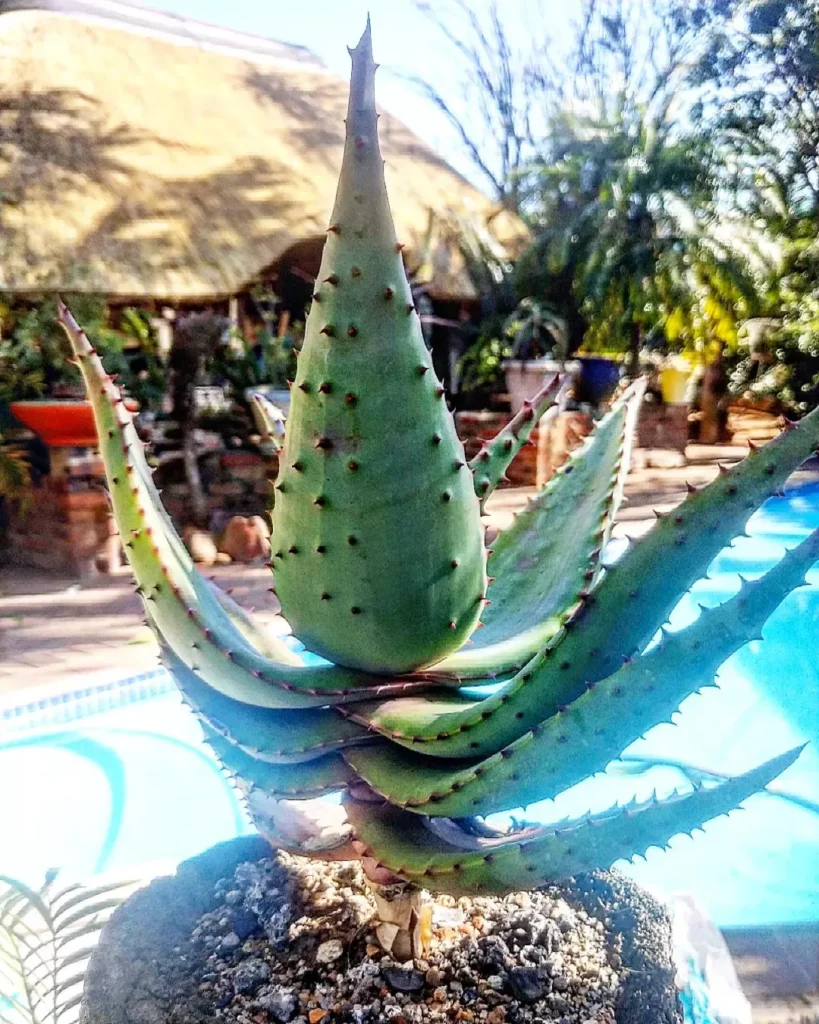
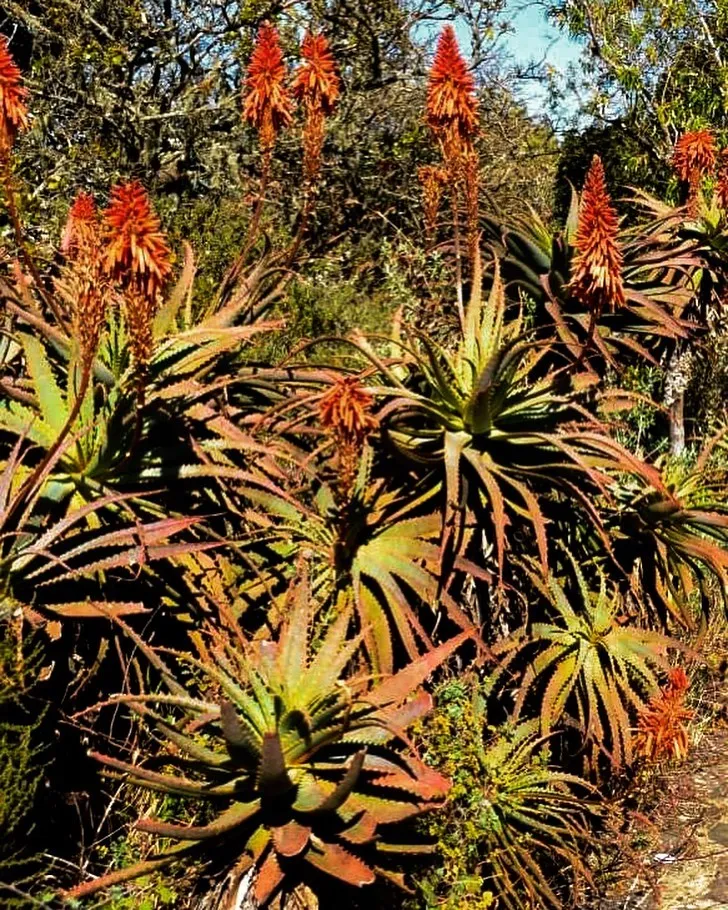
When it comes to the light requirements for South African Aloe plants, they thrive best in full sun. Placing them in an area where they can receive direct sunlight is ideal. However, they can also tolerate partial shade for part of the day, especially in regions with harsh sun. It’s important to find a balance between sunlight and shade to ensure the optimal growth and development of your plants.
For those living in areas with intense sunlight, providing some light shade or dappled sunlight in the afternoon can help protect the South African Aloe plants from getting scorched. Remember, these plants are native to South Africa, where they are exposed to intense heat and sunlight. So, they can adapt to drier conditions but still appreciate some shade during the hottest part of the day.
South African Aloe plants can also tolerate moderate to high humidity, making them suitable for a variety of climates. These plants are generally hardy and can tolerate temperatures down to 25°F, making them suitable for USDA hardiness zones 9b to 12. However, it’s important to protect them from freezing temperatures, as prolonged exposure can damage the leaves and overall health of the plant.
How to Provide the Right Light for Your South African Aloe Plants:
- Place the plants in a location where they can receive direct sunlight for at least a few hours a day.
- Provide some light shade or dappled sunlight in the afternoon, especially in regions with intense sun.
- Ensure the plants have access to moderate to high humidity levels, as they can adapt to drier conditions.
- Protect the plants from freezing temperatures, as they can tolerate temperatures down to 25°F.
Watering South African Aloe
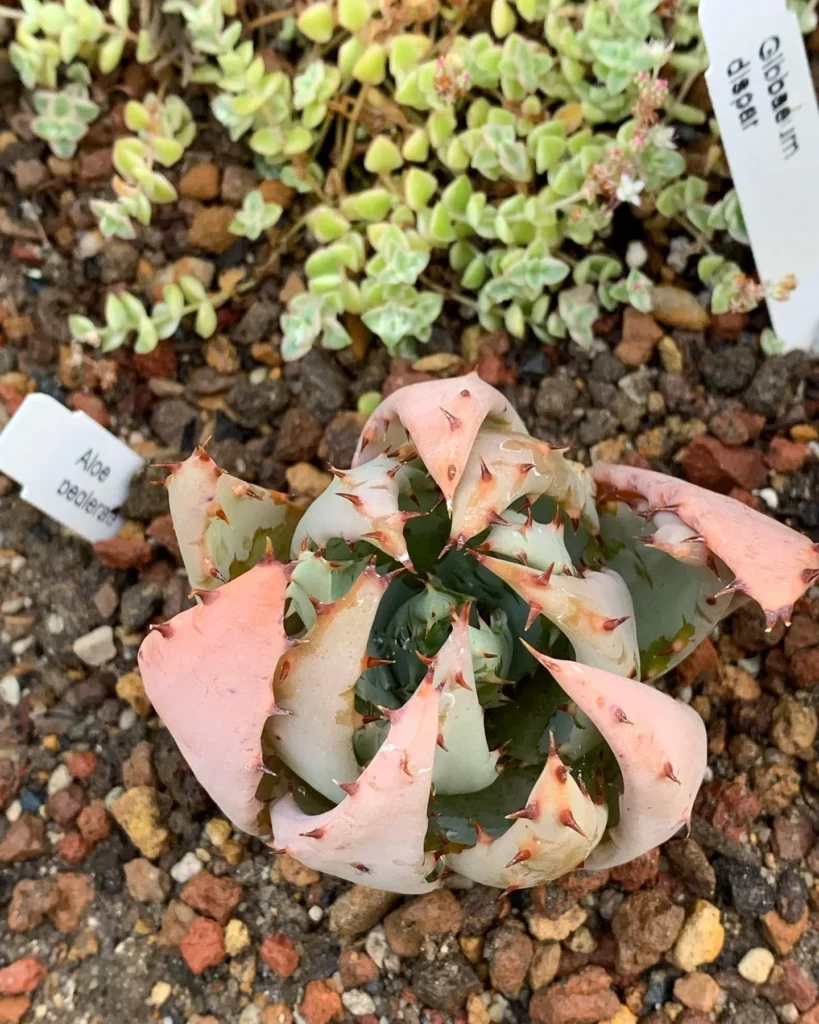
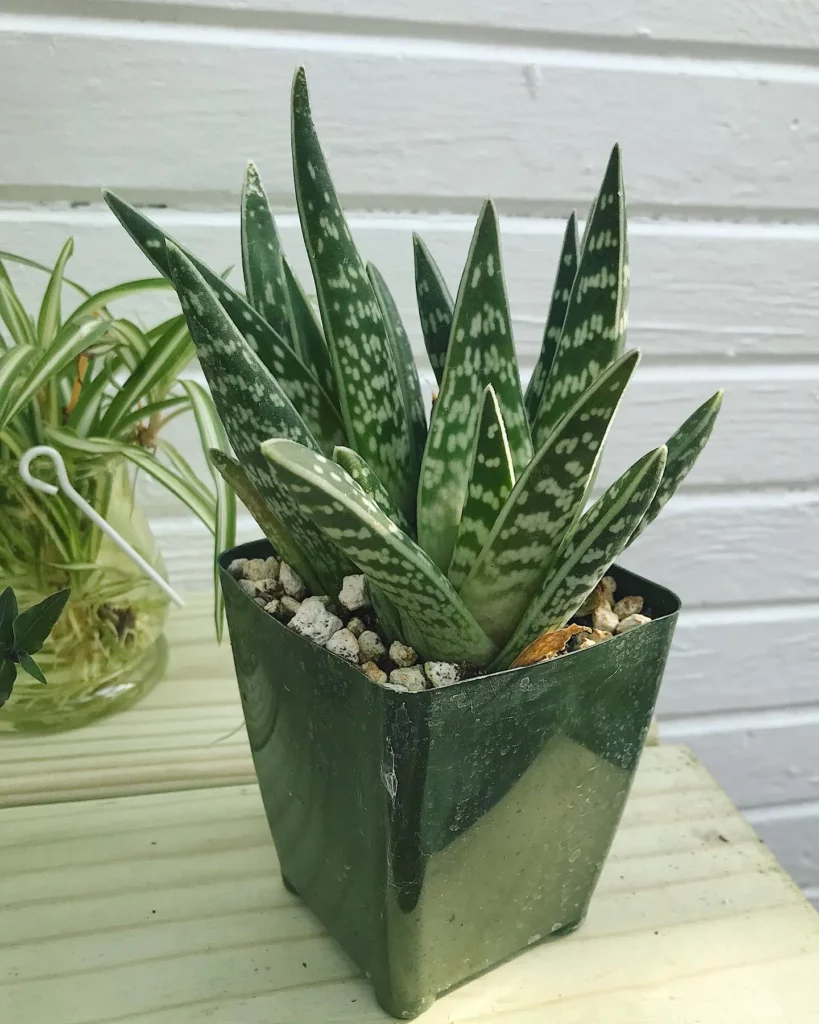
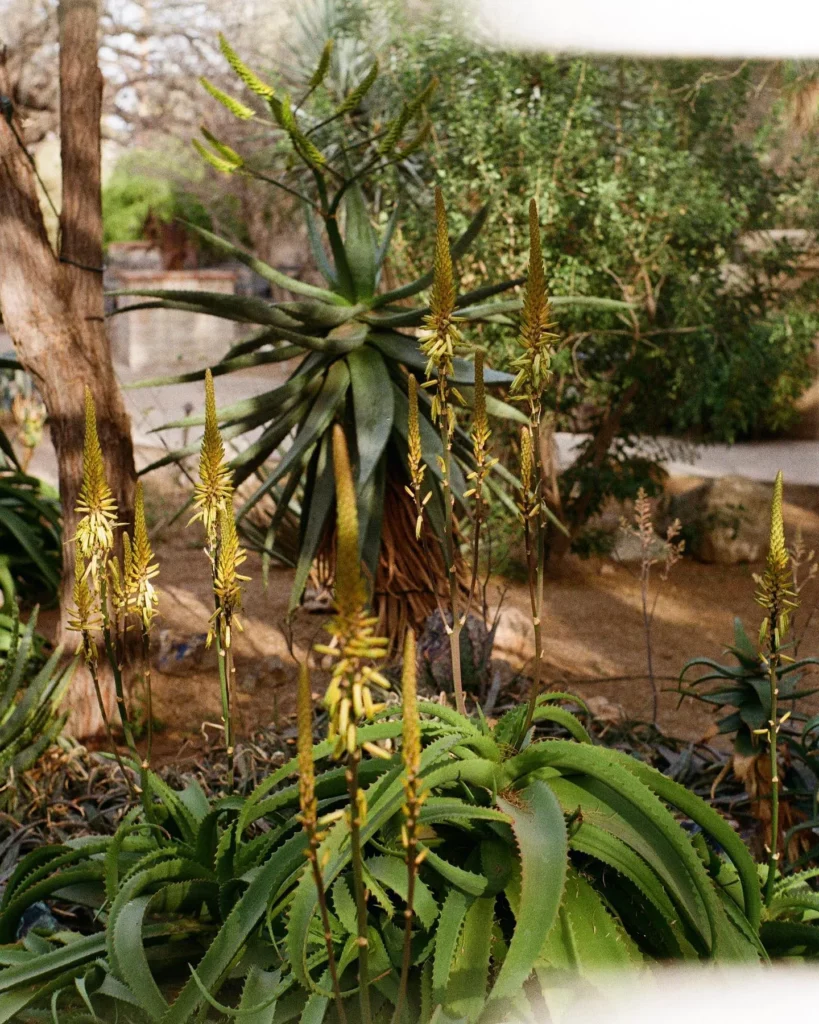
Proper watering is essential for the health and vitality of South African aloe plants. These hardy succulents have adapted to withstand long periods without water, so it’s important not to overwater them. The best watering method for South African aloe plants is the soak-and-dry approach. This means you should water the plant only when the soil feels dry 2 to 3 inches down.
When watering, make sure to thoroughly saturate the soil and allow any excess water to drain away. Avoid watering the leaves or allowing water to sit in the saucer, as this can lead to root rot. Overwatering can also cause yellowing, swollen, and translucent organs, as well as root rot. Underwatered plants, on the other hand, may appear lackluster and wrinkled.
Watering Tips for South African Aloe:
- Check the moisture level of the soil by inserting your finger 2 to 3 inches deep. Only water if the soil feels dry at this depth.
- Water thoroughly, allowing water to soak into the soil until it drains out of the bottom of the pot.
- Avoid watering the leaves directly, as this can encourage fungal diseases.
- During the winter months, reduce watering frequency as the plant enters its dormant period.
Fertilizing South African Aloe
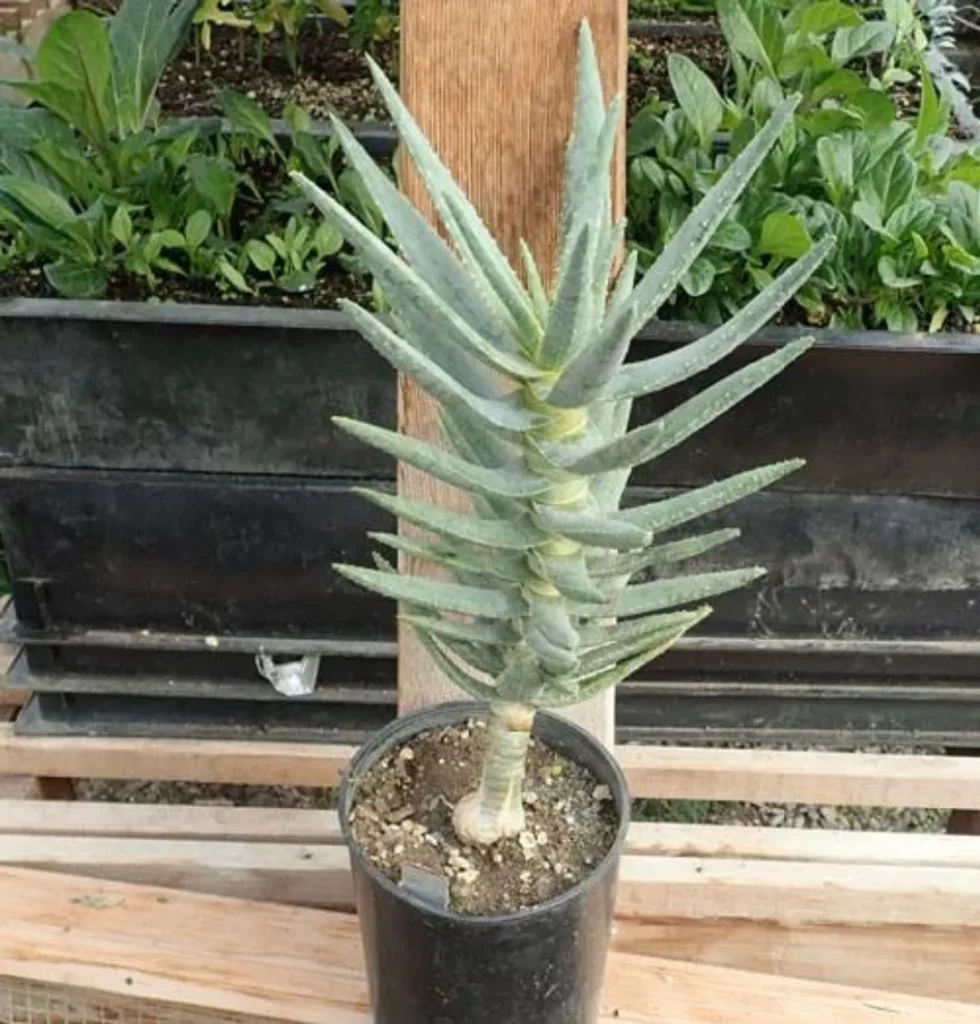
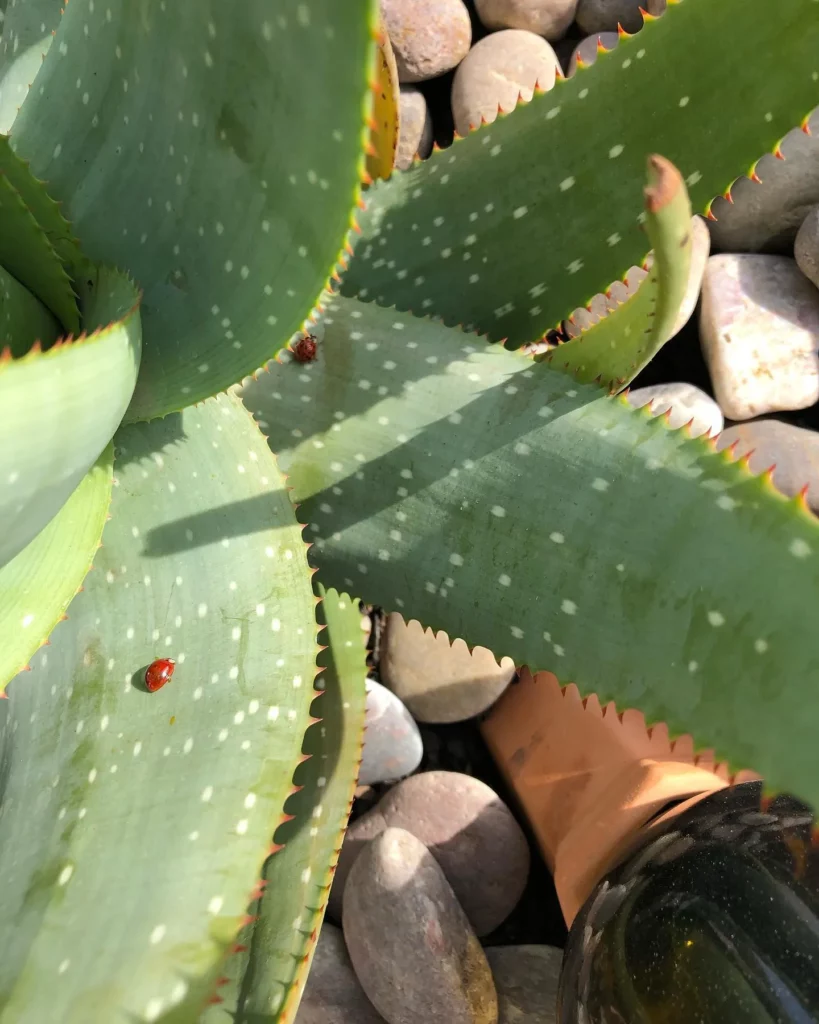
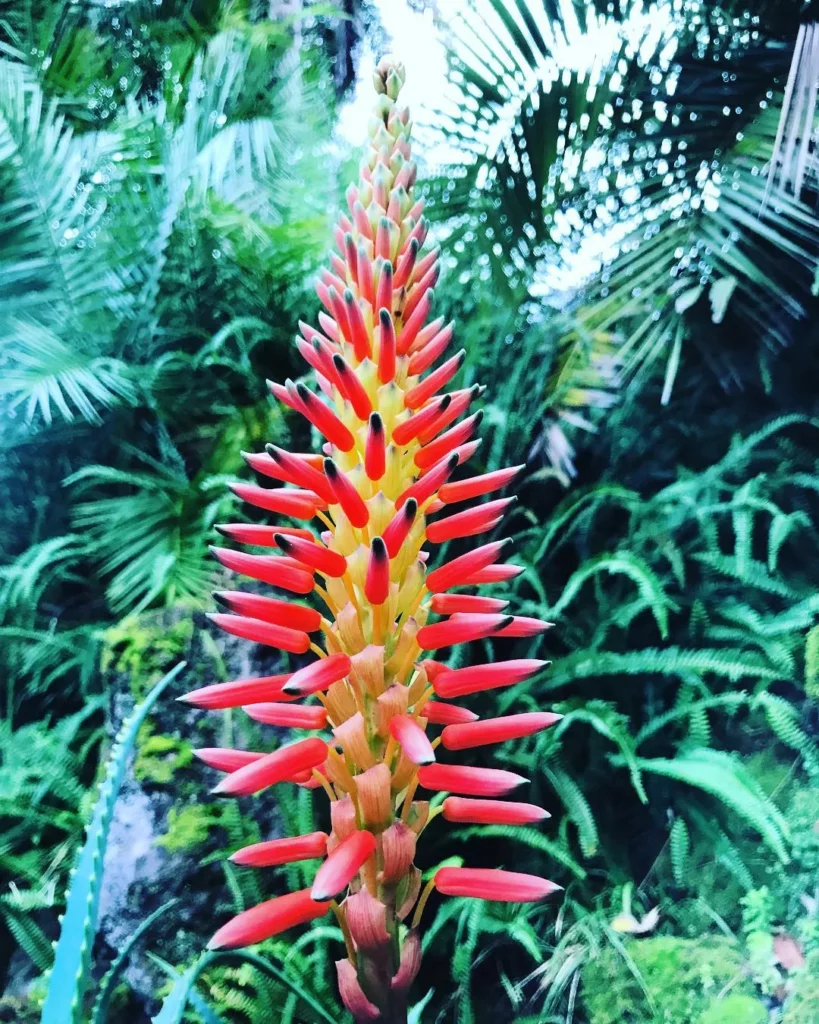
Fertilizing South African aloe plants is an important part of their care routine. While they don’t require frequent fertilizing, providing them with the right nutrients can promote healthy growth and vibrant blooms. Here are some tips for fertilizing your South African aloe:
1. Choose the right fertilizer
When it comes to fertilizing South African aloe, it’s best to use a balanced liquid houseplant fertilizer that is suitable for succulents. Look for a fertilizer with an N-P-K ratio of around 10-10-10 or a similar balanced ratio. This will ensure that the plant receives a mix of nitrogen, phosphorus, and potassium, which are essential for its overall health.
2. Follow dosage instructions
When applying fertilizer to your South African aloe, it’s important to follow the dosage instructions provided on the packaging. Over-fertilizing can be harmful to the plant, so always use the recommended amount. Generally, fertilizing once every 2-4 weeks during the growing season (spring and summer) is sufficient.
3. Consider organic compost
If you prefer a more natural approach, you can also use organic compost to feed your South African aloe. Apply a thin layer of compost around the base of the plant once in the spring and summer. This will provide a slow-release source of nutrients and help maintain the soil’s fertility.
Potting South African Aloe
When it comes to potting South African aloe plants, it’s important to consider their preference for well-draining soil. You can use any potting mix that is suitable for succulents. To ensure proper drainage, you can add one part coarse sand or perlite per two parts soil. This will prevent water from sitting in the pot and potentially causing root rot.
Repotting is generally not necessary unless the plant becomes rootbound or starts tipping over. If you do need to repot your South African aloe, choose a pot that is one size larger than the current one and make sure it has drainage holes. When repotting, be careful not to plant the aloe too deep, as this can lead to issues with the plant’s overall health and growth.
Proper Potting Technique:
- Choose a well-draining potting mix suitable for succulents.
- Add one part coarse sand or perlite per two parts soil to improve drainage.
- Only repot the aloe if it becomes rootbound or starts tipping over.
- Select a pot one size larger than the current one with drainage holes.
- Be careful not to plant the aloe too deep when repotting.
Propagation of South African Aloe
Propagating South African aloe plants is an exciting way to expand your collection or share the beauty of these succulents with others. There are two main methods of propagation: through offshoots or pups and from seeds.
Offshoot Propagation
Offshoots, also known as pups, are small plants that grow from the base of the mother plant. To propagate through offshoots, carefully detach them from the mother plant using a clean, sharp knife or pruning shears. Make sure each pup has its own roots before separating it. Once separated, plant the offshoots in fresh, well-draining potting soil. Provide them with indirect sunlight and lightly water until they establish roots and begin to grow on their own.
Seed Propagation
Another method of propagating South African aloe plants is through seeds. Collect mature seeds from the plants and sow them in a seed tray filled with a well-draining mix. Keep the seeds lightly covered with soil and water gently. Place the tray in a warm location with indirect sunlight. Germination can take several weeks to months, so be patient. Once the seedlings have grown, transplant them into individual pots and continue to care for them as you would with mature aloe plants.
- Propagation of South African aloe can be done through offshoots (pups) or seeds.
- To propagate through offshoots, carefully detach them from the mother plant and plant them in fresh, well-draining soil.
- To propagate through seeds, collect mature seeds and sow them in a seed tray with a well-draining mix.
- Both methods require patience and proper care to ensure successful propagation.
Growth and Development of South African Aloe
South African aloe plants have a slow growth rate and can take around 4 to 5 years to produce their first blooms. These hardy succulents have a tree-like habit and can reach an impressive height of 6 to 13 feet when grown outdoors. The tall, striking presence of a mature South African aloe is truly a sight to behold.
Blooms on South African aloe plants typically occur between January and March, although they can occur at any time of the year. The spires of tubular flowers start as reddish-orange buds and gradually change to yellow-orange or pure yellow as they open. The vibrant colors of the blooms add a stunning contrast to the gray-green leaves, creating a visually captivating display.
To promote the growth and development of your South African aloe, it is crucial to provide optimal growing conditions. This includes placing the plant in an area with plenty of direct sunlight and ensuring the soil is well-draining. Regular watering and appropriate fertilization can also support healthy growth, allowing your South African aloe to thrive to its full potential.
Pests and Diseases of South African Aloe
When it comes to caring for South African Aloe plants, it’s essential to be aware of potential pests and diseases that can affect them. While these hardy succulents are generally resilient, they can still fall victim to certain common issues.
One of the most notorious pests that can target South African Aloe plants is the aloe snout weevil. These little pests can cause significant damage to the plant by feeding on its leaves and roots. To protect your aloe, regularly inspect the leaves and look for signs of weevil activity, such as holes or distorted growth. If you notice any infestation, apply an environmentally friendly insecticide or remove the affected parts of the plant.
Aphids and mealybugs are also potential threats to South African Aloe plants. These tiny insects can cause stunted growth and weaken the plant. If you spot any clusters of these pests, you can try using a mild soap and water solution or a horticultural oil spray to control the infestation. Another technique is introducing beneficial insects like ladybugs, which naturally prey on aphids and mealybugs.
Lastly, keep an eye out for white scale on your South African Aloe. These small, white insects can latch onto the leaves and suck out the plant’s sap, resulting in yellowing or wilting foliage. If you notice any white scale infestation, gently wipe the affected leaves with a cotton swab dipped in rubbing alcohol or use an organic insecticidal soap.
FAQ
What is the appearance of South African Aloe?
South African aloe plants have thin and narrow gray-green leaves that spread out and curve downward towards the tips. The leaves can grow up to 2 feet long and have small, sharp reddish teeth along the margins. The plant has a tree-like habit and can reach a height of 6 to 13 feet when grown outdoors. The flowers of the South African aloe are a beautiful sight, with spires of tubular flowers that start as reddish-orange buds and change to yellow-orange or pure yellow as they open.
What are the light requirements for South African Aloe?
South African aloe plants prefer full sun but can tolerate partial shade for part of the day. It is best to place them where they can get direct sunlight and have some light shade or dappled sunlight in the afternoon, especially in regions with harsh sun. They can also tolerate moderate to high humidity, although they can adapt to drier conditions. When grown in the garden, South African aloe plants are suitable for USDA hardiness zones 9b to 12 and can tolerate temperatures down to 25°F.
How should I water South African Aloe?
South African aloe plants are adapted to withstand long periods without water, so it is important not to overwater them. The best watering method is the soak-and-dry method, where you water the plant only when the soil feels dry 2 to 3 inches down. Avoid watering the leaves or allowing water to sit in the saucer, as this can lead to root rot. If the plant becomes underwatered, it will appear lackluster and wrinkled, while overwatering can lead to yellow, swollen, and translucent organs and root rot.
How should I fertilize South African Aloe?
South African aloe plants do not require frequent fertilizing. A balanced liquid houseplant fertilizer suitable for succulents can be applied according to the package instructions, both in terms of dosage and frequency. Alternatively, organic compost can be applied once in the spring and summer to provide nutrients for the plant. However, it is important to cut back on feeding in autumn and winter to allow the plant to enjoy a dormant period.
How should I pot South African Aloe?
South African aloe plants prefer well-draining soil and can be potted in any potting mix appropriate for succulents. Adding 1 part coarse sand or perlite per 2 parts soil can ensure proper drainage. Repotting is usually not necessary unless the plant becomes rootbound or starts tipping over. If repotting is needed, use a pot 1 size larger than the current one and make sure it has drainage holes. When repotting, be careful not to plant the aloe too deep.
How can I propagate South African Aloe?
South African aloe plants can be propagated through both offshoots (pups) from the mother plant and seeds. Offshoots can be detached from the mother plant and replanted in fresh, free-draining potting soil. Seeds can be collected from the plants and sown in a seed tray filled with a well-draining mix. It may take several years for aloe seeds to reach maturity and produce blooms.
How does South African Aloe grow and develop?
South African aloe plants are slow-growing and can take 4 to 5 years to produce their first blooms. They have a tree-like habit and can reach a height of 6 to 13 feet when grown outdoors. Blooms usually occur between January and March, but can occur at any time of the year. The plant’s growth can be promoted by providing optimal growing conditions, including proper sunlight, watering, and fertilizing.
What pests and diseases can affect South African Aloe?
South African aloe plants are generally resilient and tolerant of various environmental conditions. However, they can be susceptible to certain pests and diseases, including the aloe snout weevil, aphids, mealybugs, and white scale. Overwatering can also lead to root rot. It is important to regularly inspect the plants for signs of infestation or disease and take appropriate measures, such as using environmentally friendly insecticides or removing affected parts of the plant.


